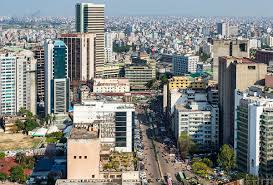
Introduction
Dhaka, the capital of Bangladesh, is a city that beautifully intertwines history with modernity. With a population exceeding 21 million, it stands as one of the fastest-growing megacities in the world. Its importance transcends mere geography; it is a center of culture, politics, and economy, making it a crucial focal point for both local and international observers.
Historical Significance
Established in the 7th century as a trade settlement, Dhaka has served as the capital of various empires. The Mughals transformed it into a thriving cultural hub in the 17th century, known for its muslin fabric and flourishing trade. The remnants of this rich history can be seen in the city’s architecture, with iconic landmarks such as Lalbagh Fort and Ahsan Manzil attracting countless visitors each year.
Modern Developments
In recent years, Dhaka has undergone significant urbanization and economic growth. The manufacturing and garment industries have positioned Bangladesh as a global player, particularly in textile exports. However, this rapid development comes with challenges like traffic congestion, pollution, and inadequate infrastructure. The government, along with various NGOs, is actively working on solutions to tackle these issues, such as the construction of the Dhaka Metro, which aims to ease public transportation.
Cultural Melting Pot
Dhaka is often referred to as a cultural melting pot. The city hosts numerous festivals, art exhibitions, and cultural events that reflect its diverse heritage. The language movement commemorated annually is a testament to the deep-rooted cultural identity and the resilience of its people. The vibrant food scene, combining traditional Bengali dishes with influences from various cultures, further enhances its dynamism.
Future Outlook
Looking ahead, experts forecast that Dhaka will continue to grow both in population and economic significance. While challenges remain, such as ensuring sustainable development and improving living standards, initiatives aimed at better urban planning and environmental management are essential. Dhaka’s growth trajectory could serve as a model for other cities in rapidly developing countries.
Conclusion
Dhaka represents the essence of Bangladesh—steeped in history yet striving for a future defined by progress. Understanding Dhaka’s complexities and developments provides insight into the broader narrative of urbanization and cultural resilience in contemporary society. As we observe the city’s journey, it unfolds a story of hope, challenges, and the unyielding spirit of its people.



